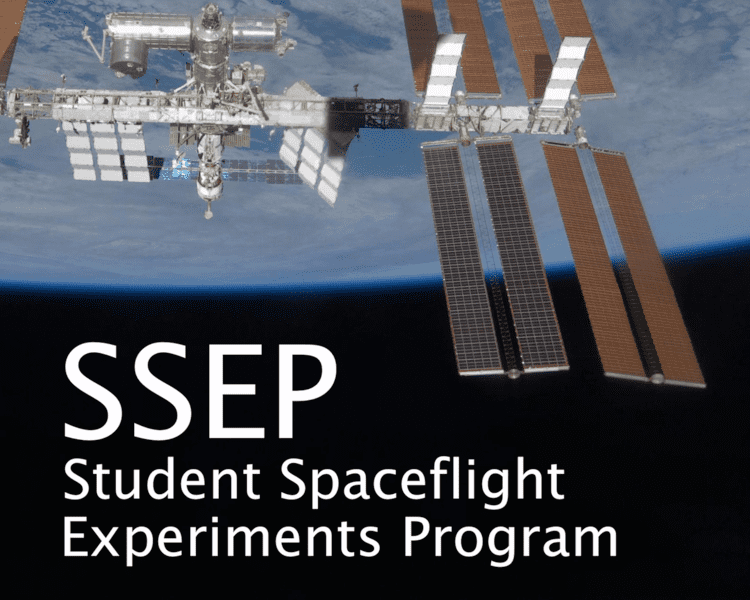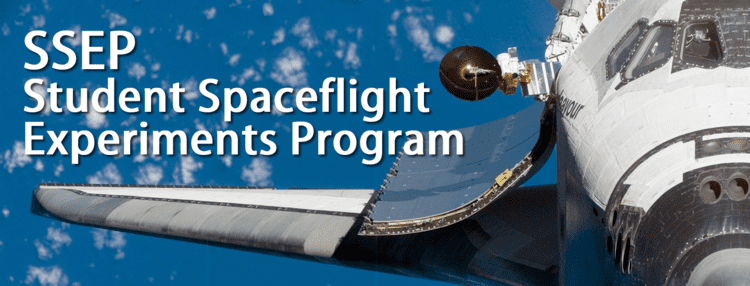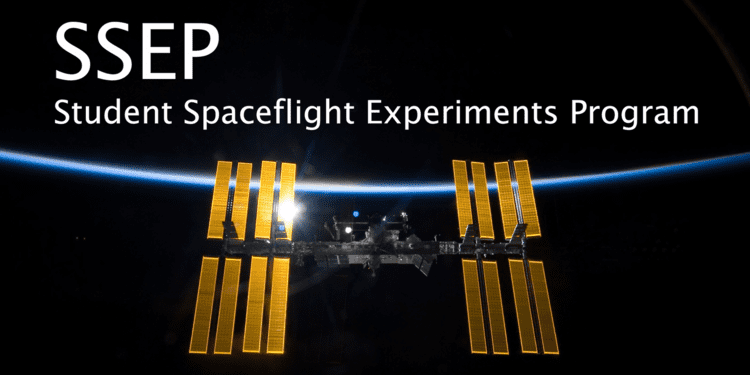Established June 2010 Head Jeff Goldstein | Mission STEM student outreach Started June 2010 | |
Founder(s) Jeff Goldstein, director, NCESSE Key people Stacy Hamel, National Program ManagerDrew Roman, Technology ManagerHarri Vanhala, Science AdvisorTim Livengood, Science AdvisorMichael Hulslander, Education Advisor Website | ||
Student spaceflight experiments program day 1 intro
The Student Spaceflight Experiments Program (SSEP) provides an opportunity for student groups from upper elementary school through university to design and fly microgravity experiments in low Earth orbit (LEO). SSEP is a program of the National Center for Earth and Space Science Education (NCESSE, a project of the Tides Center), the Arthur C. Clarke Institute for Space Education, and the private space hardware company NanoRacks. SSEP operates under a Space Act Agreement between the sponsoring organizations and NASA, allowing the International Space Station (ISS) to be utilized as a national laboratory.
Contents
- Student spaceflight experiments program day 1 intro
- Student spaceflight experiments program
- History
- Process
- References

Student spaceflight experiments program
History

The program was launched in June 2010, by NCESSE in the U.S. and by the Clarke Institute internationally. As of 2015, SSEP has sponsored eight missions to LEO – two on board the Space Shuttle, and six to the ISS – with a seventh mission to the ISS announced in April 2014, and expected to fly in the spring of 2015.

In the first eight SSEP flight opportunities, 48,900 students in grades 5 through 15 (junior undergraduate in the U.S. higher education system) participated in experiment design and proposal writing. Of 7,922 proposals received, a total of 114 experiments were selected for flight, with one from each community participating in each flight opportunity. As of 15 October 2014, 96 of these experiments have been successfully launched. The 18 experiments comprising Mission 6 to the ISS were lost when the Cygnus CRS Orb-3 vehicle exploded shortly after launch on 28 October 2014.
Process
The competition to select student projects for flight is designed to resemble a standard research proposal process. Interested groups must submit proposals in response to announced criteria; these proposals are then peer-reviewed against the criteria in a two-stage selection process, with the vast majority of proposals rejected.
Each selected experiment is provided with one mini-laboratory, which is flown on the ISS and then returned to Earth for analysis. Experiments selected for flight have included research into crystal growth, composting, cell division, seed germination, and calcium metabolism. The cost of each experiment is on the order of US$21,000, which must be raised by the community developing the experiment.
Students have an opportunity to share their research at a national conference sponsored by the Smithsonian National Air and Space Museum, NCESSE, and the Clarke Institute. Students participating in the program have also been given the chance to participate in a videoconference with space station astronauts.
